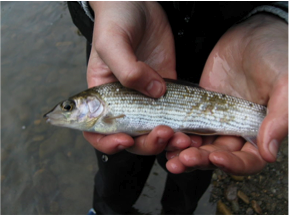Chapter 23. The Miracle [October 6, 1347]
Cultural Explanations
 |
Chapter 23. The Miracle [October 6, 1347] Cultural Explanations |
|
|
In this chapter Bávlos sees Master Claes's statue become credited with miraculous healing powers. | ||
| Hildegard, Margarete |
In this chapter, Bávlos returns to the German-speaking populace of Reval in time to witness the spread of a miracle tale associated with the new statue he has just delivered. In the way of many people speaking a language he doesn't know too well yet, he agrees to Hildegard's pronunciation of Master Claes of Gotland as "Master Klaus of Goslar," thereby leading the woman—and eventually the entire populace of Reval—to believe that the miraculous statue comes from a different workshop than it really does. Once the tale gets going, there is no correcting it, and even Master Claes himself comes to believe that the miraculous statue in question is one from a rival workshop to the south.
Bávlos catches some fish described as harjus in Finnish and soavvil in Sámi. This is a freshwater member of the trout family known in Latin as Thymallus thymallus, often called "grayling" in English.
 |
| Thymallus thymallus |
These are good fish for eating and inhabit rivers in Northern and Central Europe.
The city of Goslar was a prominent city of Lower Saxony, a trading partner with Reval, Lübeck, Visby and other cities of the Hanseatic League. Neither Master Claes nor Master Klaus are historical personages, but both Visby and Goslar were important centers for wooden statuary.